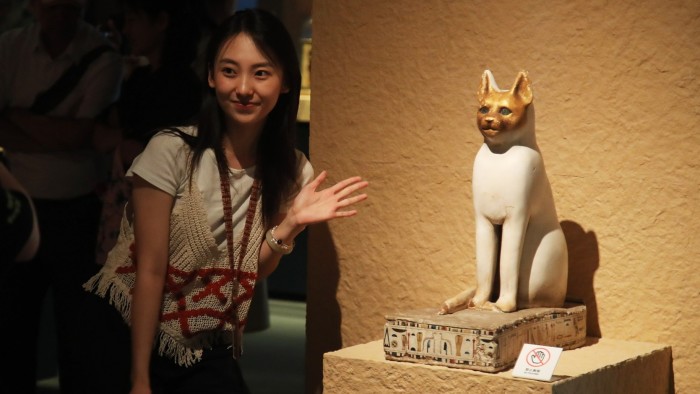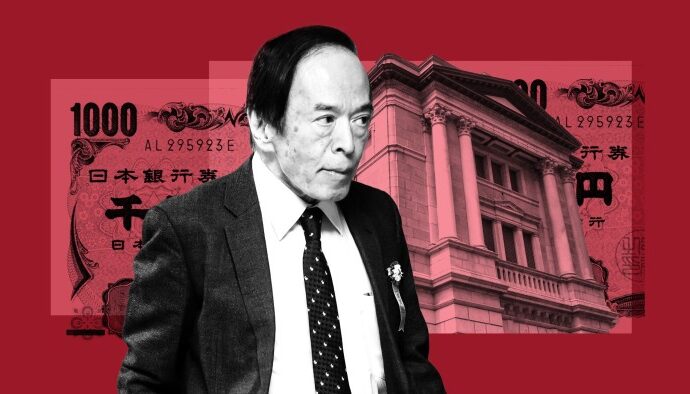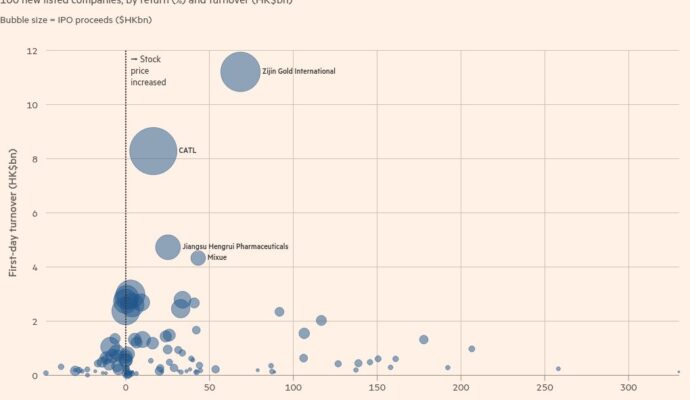
Unlock the Editor’s Digest for free
Roula Khalaf, Editor of the FT, selects her favourite stories in this weekly newsletter.
As the clock struck midnight, a queue had already gathered outside the Shanghai History Museum. In a country that prides itself on its distant past, the artefacts waiting inside were almost enough to make China seem young again.
The ancient Egypt exhibition, which first launched over a year ago, has been so popular that ahead of its final weekend the museum was kept open for 168 hours continuously. Tickets were completely sold out.
Museums have a special resonance in China, a country where the government within living memory campaigned against tradition. Exhibitions, now often both run and promoted by local governments, draw vast crowds. Beijing estimates visitor numbers surpassed 60mn on the May Day public holiday alone.
At Shanghai’s “On Top of the Pyramid: The Civilization of Ancient Egypt” exhibition, a meaningful portion of that total seemed to have shown up for the penultimate night. Displays, many of which required a minor battle to reach, included statues, empty coffins and a section on Tutankhamun — though the pharaoh himself did not make the trip.
“You can actually see this one is a cat,” exclaimed one guest, close to a selection of bandaged remains dating from 664 to 332BC.
“They [cats] represent luck,” explained another. Most exhibition descriptions were in Chinese only, reflecting the heavily domestic profile of attendees.
Ancient Egypt has a particular importance in China. In its education system and historiography, the idea of the “four ancient civilisations” — Egypt, Babylon (or Mesopotamia), India and China — figure prominently. Within this framework (which does not feature any part of modern Europe), China places a heavy emphasis on the continuity of its own history, which it sees as contrasting with the rest.
But at the museum, visitors were more interested in connections than differences. “Their civilisation is very similar to ours,” said Hu Jiaying, a 27-year-old PhD in Egyptian studies who was at the exhibition to show her friends around.
The “funeral culture” in particular bore resemblances to ancient China, she added. “We also had women weeping, we wore white, we made sacrificial offerings.”
Like many young people in Shanghai, Hu carried a small toy animal attached to her bag. “This is a dog,” she said. “It represents death.”
For those at the museum, any potentially unnerving aspects of viewing millennia-old coffins in the dead of night were counteracted by the force of the crowd, which by 1am showed no signs of subsiding. It included a large number of young children, though they seemed to be the least exhausted guests.
“Why are there so many people here?” I asked one security guard, a fixture in or near almost every building in Shanghai. He paused to think. “There are a lot of people in China,” he replied, “and a lot of them have money.”
The 1922 rediscovery of Tutankhamun’s tomb caused a museum frenzy of its own in interwar London, a society also characterised by a class system interwoven with industrialisation and urban migration.
“Nearly 5,000 precious artefacts were unearthed from the mausoleum”, a description at the Shanghai exhibition explained, “which were so luxurious and spectacular as to shock the whole world.”
For many decades of that same century, China was closed off from the world. Hu — both a student of Egypt and part of a generation who has been able to travel more widely — has been to the country several times.
“Towards this place [Egypt]”, she said, “our imaginations are filled with a sense of the mythical”, and many Chinese-language novels have been written about it.
Emerging from the museum at 2am into a wall of summer heat, the palm trees and reconstructed sphinxes were enough to conjure up Memphis itself. But the indefatigable rush of guests, both on their way in and out, had all the hallmarks of mainland China in 2025.
Some long-distance visitors even had their suitcases with them, as though they were embarking on a grand expedition — even if no borders had been crossed.

